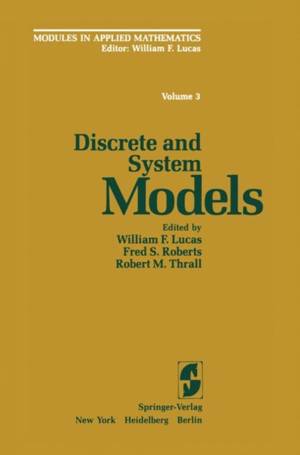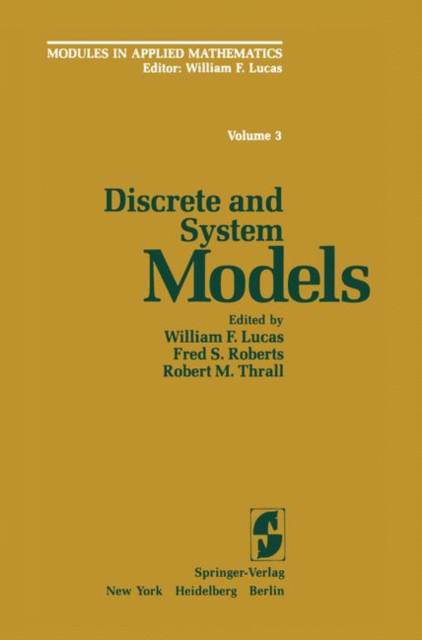
Je cadeautjes zeker op tijd in huis hebben voor de feestdagen? Kom langs in onze winkels en vind het perfecte geschenk!
- Afhalen na 1 uur in een winkel met voorraad
- Gratis thuislevering in België vanaf € 30
- Ruim aanbod met 7 miljoen producten
Je cadeautjes zeker op tijd in huis hebben voor de feestdagen? Kom langs in onze winkels en vind het perfecte geschenk!
- Afhalen na 1 uur in een winkel met voorraad
- Gratis thuislevering in België vanaf € 30
- Ruim aanbod met 7 miljoen producten
Zoeken
€ 198,45
+ 396 punten
Omschrijving
The purpose of this four volume series is to make available for college teachers and students samples of important and realistic applications of mathematics which can be covered in undergraduate programs. The goal is to provide illustrations of how modem mathematics is actually employed to solve relevant contemporary problems. Although these independent chapters were prepared primarily for teachers in the general mathematical sciences, they should prove valuable to students, teachers, and research scientists in many of the fields of application as well. Prerequisites for each chapter and suggestions for the teacher are provided. Several of these chapters have been tested in a variety of classroom settings, and all have undergone extensive peer review and revision. Illustrations and exercises be covered in one class, are included in most chapters. Some units can whereas others provide sufficient material for a few weeks of class time. Volume 1 contains 23 chapters and deals with differential equations and, in the last four chapters, problems leading to partial differential equations. Applications are taken from medicine, biology, traffic systems and several other fields. The 14 chapters in Volume 2 are devoted mostly to problems arising in political science, but they also address questions appearing in sociology and ecology. Topics covered include voting systems, weighted voting, proportional representation, coalitional values, and committees. The 14 chapters in Volume 3 emphasize discrete mathematical methods such as those which arise in graph theory, combinatorics, and networks.
Specificaties
Betrokkenen
- Uitgeverij:
Inhoud
- Aantal bladzijden:
- 353
- Taal:
- Engels
- Reeks:
Eigenschappen
- Productcode (EAN):
- 9781461254454
- Verschijningsdatum:
- 8/11/2011
- Uitvoering:
- Paperback
- Formaat:
- Trade paperback (VS)
- Afmetingen:
- 156 mm x 234 mm
- Gewicht:
- 526 g

Alleen bij Standaard Boekhandel
+ 396 punten op je klantenkaart van Standaard Boekhandel
Beoordelingen
We publiceren alleen reviews die voldoen aan de voorwaarden voor reviews. Bekijk onze voorwaarden voor reviews.








